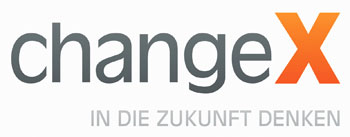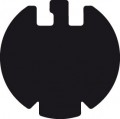 We are 240 people from 35 different countries, gathering around the fire of visual thinking and practice to connect the dots of the field for the world. The room was full of energy and good spirit as our hosts opened the conference, talking about the dream of hosting the conference in Europe and the intention to connect and deepen the field. It was a leap of faith and a bunch of determination but Berlin welcomed us – this is the 19th IFVP conference, but only the first in Europe.
We are 240 people from 35 different countries, gathering around the fire of visual thinking and practice to connect the dots of the field for the world. The room was full of energy and good spirit as our hosts opened the conference, talking about the dream of hosting the conference in Europe and the intention to connect and deepen the field. It was a leap of faith and a bunch of determination but Berlin welcomed us – this is the 19th IFVP conference, but only the first in Europe.
Together we are creating a learning village over these three days. There are four parts to our agenda – community learning together in plenary sessions with methods like World Café ad Open Space, deeper inquiry through the Tracks, storytelling – both from our elders and from each of us – and hands-on practice through workshop sessions. While the overall theme of the conference is Connecting the Dots, each day has a focus. Day 1 was about Discovering Patterns, Day 2 about Expanding Views and Day 3 focused on Exploring Possibilities.
On day two the conference dived deeper into the art and practice of visual thinking to challenge what we know. Twenty sessions were offered, some 90 minutes in length and some 180 minutes, ranging from The Art of Paying Attention to Visuals for Design Thinking and How to Scale Your Business to Thrive. There were opportunities to get to grips with the basics, stretch the edges of practices, and get focused on the business side. The afternoon was dedicated to focusing on deeper purpose. First we heard from our “elders” — four who represent the longer history and practice in our visual thinking field. They were:
 David Sibbet — a pioneer and longtime leader in graphic recording, whose business The Grove in California offered an entrée into graphic recording to millions through their template range and who continues to explore the edge of practice
David Sibbet — a pioneer and longtime leader in graphic recording, whose business The Grove in California offered an entrée into graphic recording to millions through their template range and who continues to explore the edge of practice
Reinhard Kuchenmüller — from Visuelle Protokolle and based in Italy, Reinhard draws postcard sized snapshots and provocations to group process and is now focusing on individual coaching to make a difference
Lynn Carruthers — President of IFVP and for 14 years the graphic recorder for GBN (Global Business Network), her role was establihed for her with amazing freedom to create. She’s recently left that role and finds herself confronted with her new freedom. She’s also based in California.
Ulric Rudebeck — saw the power of visuals through David’s work and began to use them himself. That was a few decades ago now and he uses visuals to synthesize insight, stimulate innovation and purpose and galavanize potential in the groups and individuals he works with.
The conversation started with the invitation to speak from their deepest knowing of their work and with the question “what keeps us alive as learners?”. Since this was a fishbowl session, participants joined the conversation. The elders were asked “what is your advice to young people?”. “I love how fearless young people are — they don’t know what can’t be done so they just do it. Don’t give up your sovereign power to elders,” said David. “Make the choice to share and learn, be an imaginal cell and link with like-minded others.” Lynn said: “Don’t give up paper and don’t sleep with your phone.” “Stay moral”, said Ulric. “This is the beginning of the work, we can develop a culture,” said Reinhard.
After listening, the group then turned to each other to discuss what they’d heard and question arose from the audience. The elders were asked what the future of the field is — it is time to be messengers again, anything is possible right now and the field is exploding, we have hope that this is a way of seeing the whole. And finally — there are so many of us here from all over the world, it is a matter of HOW, not IF.
 And a final insight you’d like to leave us with? “We have to understand the language of power and how much power we have when we have the pen.” “We create the containers for possibilities.” “We need to believe in abundance, I’ve decided NOT to work for ass….es any more. Speak with intention, listen with attention.” And finally — “we are not so special, everyone can draw and everyone should! We can help that.”
And a final insight you’d like to leave us with? “We have to understand the language of power and how much power we have when we have the pen.” “We create the containers for possibilities.” “We need to believe in abundance, I’ve decided NOT to work for ass….es any more. Speak with intention, listen with attention.” And finally — “we are not so special, everyone can draw and everyone should! We can help that.”
The elders opened the door, and then group gathered in small groups to share stories around the invitation: Tell about a time when you experienced the artistry, magic or mystery of visual thinking in such a way that it made a profound impact. People got comfortable on chairs or on the floor, they leaned in, they shared from the heart and relationship was ripe in the room. Then five stories were invited to represent the variety of stories in the room and in our field. Then the stories were woven together and used as a lens on the visual practice field. What happens when we help people to feel seen — and we allow ourselves to be seen at the same time? How can we help each other see and be seen? What container do we need to be more honest, more vulnerable, more open? What kind of surrender do we need to practice to allow the images to come that will serve most? What is our personal practice? How can we continue to be both teachers and learners, practicing beginners mind? How can we have the courage to push the edges so that people step beyond their self-imposed roles and meet each other freely? How can we do the same for ourselves?
Day 3 started with a reconvening of the Tracks. Behind the scenes many of the Track leaders had been working hard to incorporate the input they’d received from their participants and some totally changed their plans! The energy was buzzing from every room. When we reconvened, we heard back from our Track Hosts with a recap of what had happened in their second session. With the framing of our inquiry as a basis, we stepped into Open Space. It was time for anyone and everyone to propose the topics they most wanted to work on, bringing their passion and responsibility to the fore and being prepared to be surprised. We didn’t need much encouragement to leap into the circle and post our topics, and there was every possible theme to choose from, including a session that took place at the Berlin wall and invited people passing to make their contributions about freedom. Twenty sessions were hosted on a wide range of topics.
In our final session, Brandy Agerbeck took the floor to give us a perspective of visualising practice. She began at the beginning, by reminding us that information and text are linear and that the visual and spatial give us new perspective and understanding. We all use imagery to talk, make, see, shape, engage and learn. We use images to help move confusion and isolation into clarity, connection, shared understanding, co-creation and collaboration. We use it to move from one dimensional to multi-dimensional.
 Facilitators need to use visual tools and we need to remember that the word drawing is both a noun and a verb. It is about process over product. Drawing is a tool to get to the next step. Her call to action is to GROW. Serve, share (and cite other’s work when you do!) and support (watch what you reward). And she suggested a lab format for taking action — first question (create a hypothesis), then text (experiment! Give it a go!). Next observe (what happened?) and finally share — and find some new questions to work on together.
Facilitators need to use visual tools and we need to remember that the word drawing is both a noun and a verb. It is about process over product. Drawing is a tool to get to the next step. Her call to action is to GROW. Serve, share (and cite other’s work when you do!) and support (watch what you reward). And she suggested a lab format for taking action — first question (create a hypothesis), then text (experiment! Give it a go!). Next observe (what happened?) and finally share — and find some new questions to work on together.
We closed the conference with THANK YOUs to all those who had created and supported this amazing event and with the final moving thanks from our hosts. This has been a conference unlike any other and an opportunity to create community, stretch our practice, see and be seen and glimpse the future for our practice.
For more information on EuViz, please contact Project coordinator Verena Hanke, verena@euviz.com.
![]() Click here to download press information pdf.
Click here to download press information pdf.
Click here to download article from “training aktuell” Sept. 2014


